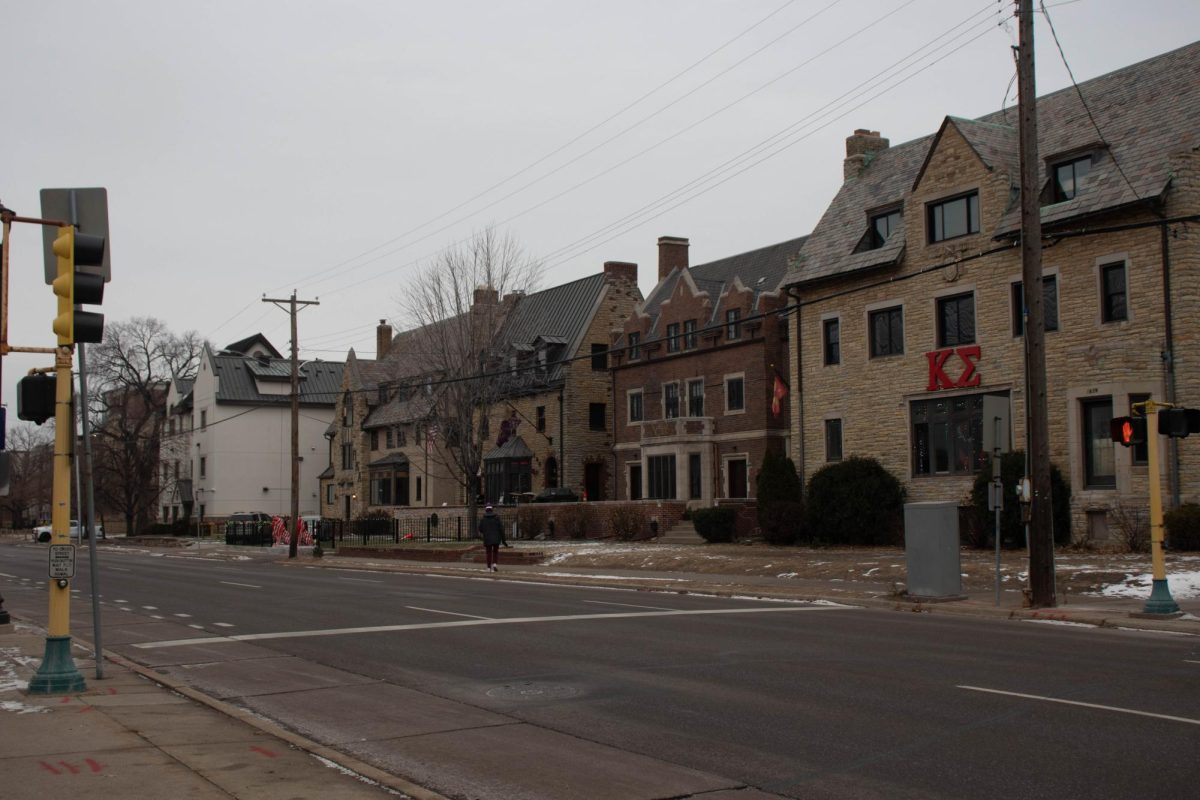Off-campus residents have a bit of an issue. In case you’ve missed out, here’s the story: If you live in the Dinkytown, Marcy-Holmes or Como neighborhoods, you might get evicted. Not because of unsafe living conditions, fire hazards or code violations but because of over-occupancy.
After the tragic fire on 15th Avenue Southeast, the city has dispatched housing inspectors to check out rental properties around campus. Minneapolis City Council member Paul Zerby, who represents the Minneapolis campus area, recently said the inspections would focus on safety. Finally, students might have thought, the city would chase down those landlords who force them to pay ridiculous amounts of money for unsanitary and unsafe properties. Finally, the city would make sure students living off campus weren’t in danger. Finally, the students would have a voice to protect them.
But wait.
If the focus of the inspections is really on safety, why did John Bergquist, director of Minneapolis operations and regulatory services, say that inspectors will look carefully at over-occupancy? What does occupancy have to do with safety? I thought this was about preventing another tragedy.
Now, before I continue to say why this is ridiculous, let’s first get a grip on the city zoning laws.
If you walk, bike or bus to campus, chances are you have the privilege of living in District R1. According to section 546.50 of our city ordinances, it is against zoning laws in District R1 to have more than three non-related people living in a house. It doesn’t matter if your house has three bedrooms or 50. Only you and two lucky friends get to live there.
However, there is a catch. This doesn’t apply to rooming houses. According to the zoning laws, rooming houses are dwellings with five or more bedrooms and a communal kitchen and communal bathrooms. Oh, and by the way, in a real rooming house, your landlord washes your sheets. So, as far as I can tell, unless your landlord wants to don an apron and toss your soiled sheets in the washer, you rooming house people are in the same boat as the rest of us.
Still, there might be a way to circumvent this nasty little section 546.50. Technically, you can have up to five people living in a house, but three of you must be related. So, the obvious solution would be to marry one roommate’s sister and adopt another roommate’s brother. But this ignores the real issue: Why is it unsafe for five non-related people to live together when it is perfectly acceptable for five people, three of whom are related, to share the same house? Does relation make the house less hazardous? Do related people take up less room? Is a fire less likely to break out in a house with related people? How does over-occupancy make a house unsafe again?
Are dorms and apartments unsafe? They are probably more occupied per square foot than any rental house is.
Now, I’m perfectly aware that we can’t have 26 people sharing a bedroom. That’s crazy in 11
different ways. But what about five or six people sharing an entire house? I hardly think that’s unreasonable, especially considering we live in a college town where multiple students are bound to live together to share expenses.
But as my favorite source Paul Zerby would say, “It’s not an option.”
OK, so let’s just assume for a minute that I’m wrong. Let’s assume that the zoning laws around campus are quite reasonable and over-occupancy is a severe danger to the students and the community as a whole. Let’s also assume, for the sake of argument, that every rental house in the Dinkytown, Marcy-Holmes and Como neighborhoods is over-occupied by one student (however, I heartily believe that there are more).
Because the housing inspectors have set a precedent that they will evict students who are violating the zoning laws (yes, it has happened), they must uniformly evict from every house that is over the legal limit – if they don’t, imagine the small, but very loud, group of students who will fight the city because they were evicted and everyone else was not.
Considering that the housing inspectors are on schedule to check 900 homes this month, we have 900 students who must look for another house. Now, suppose all the houses around campus are over the legal limit by two students (which I still feel is low). That’s 1,800 students looking for housing. Three students, 2,700 looking for a home. You get the point.
The worst part about it is there won’t be any open houses near campus for these students to move into. All the eligible houses will already be at the legal limit, and no more students will be able to squeeze in. So where are we to go? Burnsville? Madison?
It doesn’t look like we’re going to get much sympathy from our city leaders. City Council member Zerby was recently quoted as saying that he knows it’s bothersome to move, but “it’s not the end of the world.” Well, no, it isn’t the end of the world. Stabbing yourself in the eye isn’t the end of the world either, but you don’t see many people jumping at the opportunity.
I suppose I’ve been a bit hard on our City Council member. After all, he does have other members of the community to look after: people who pay property taxes, raise their families and, most importantly, vote in City Council elections. I can understand that these people have concerns about living next to college students. I can understand that Zerby must be sensitive to their needs. However, I also understand that college students aren’t going away. And, if the city refuses to be a voice to protect college students, we will have to stand up for ourselves. We will be heard.
Chad Hamblin is a columnist. He welcomes comments at [email protected]







